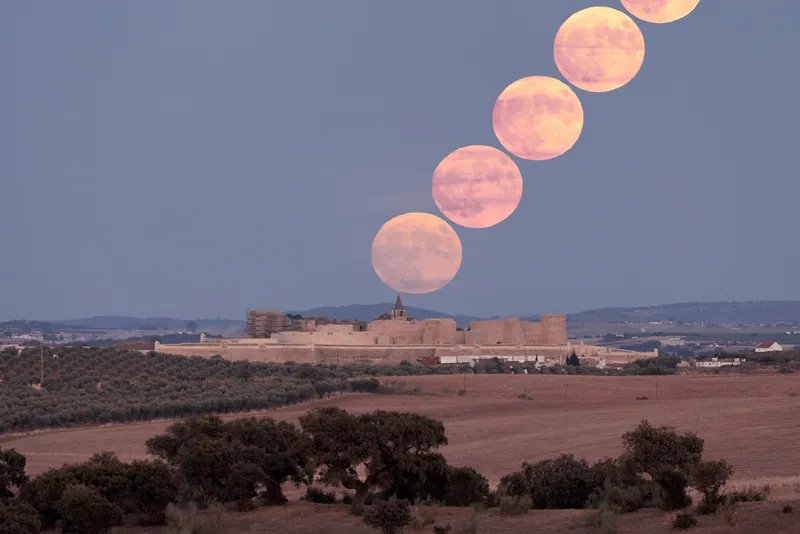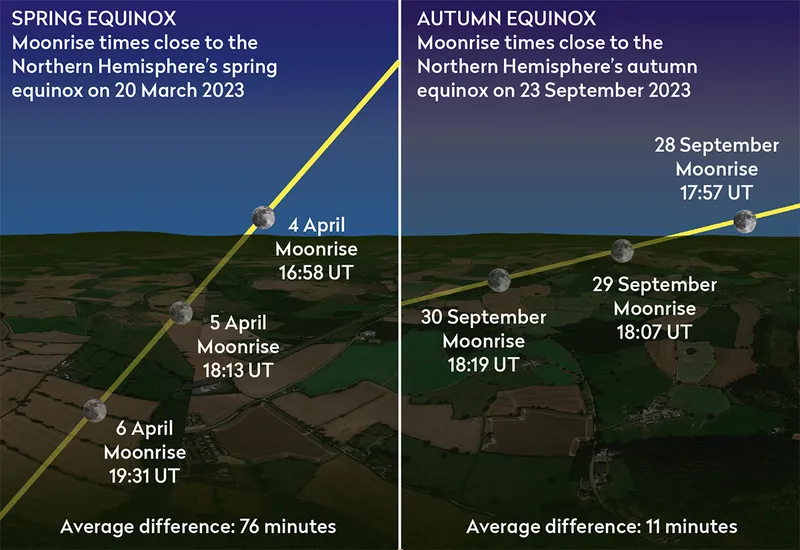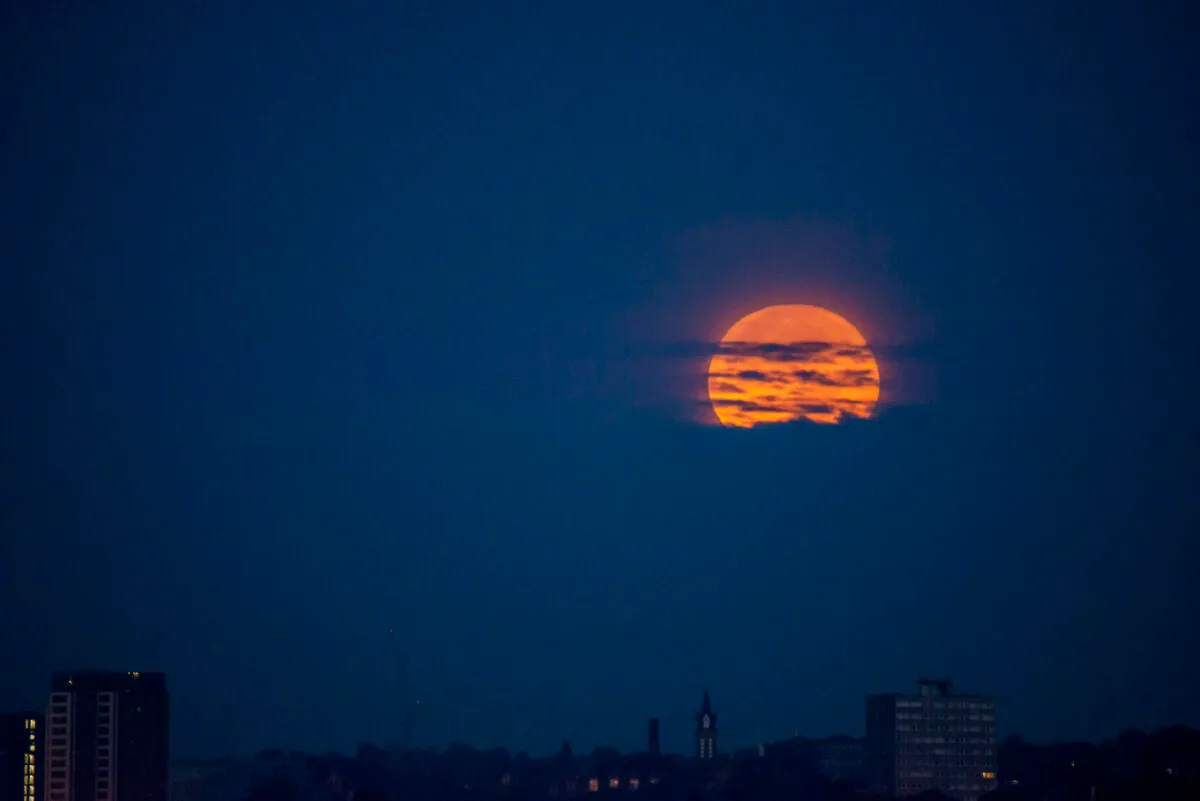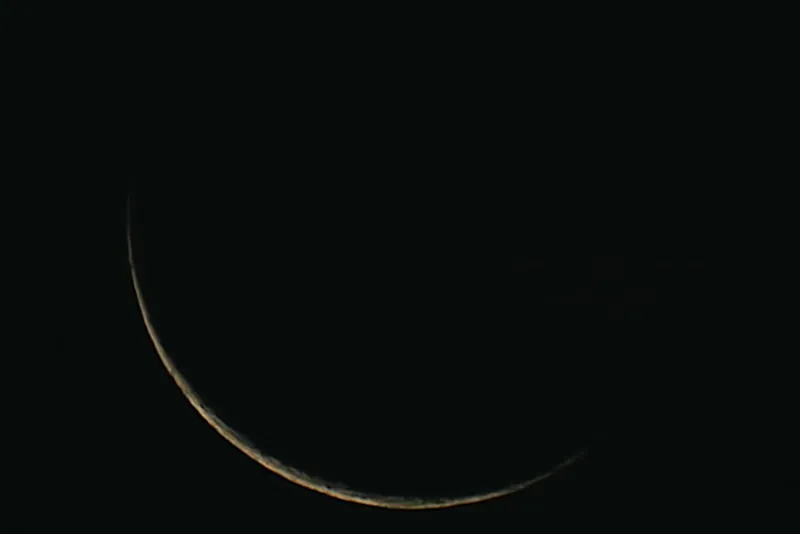The full Moon of 29 September 2023 was the last supermoon of the year, and was what's known as the 'Harvest Moon'.
A supermoon, the September Harvest Moon appears subtly larger and brighter than average.
In this guide we'll reveal what the Harvest Moon is, where the term originates and when to observe it.
For more advice, read our guides on observing the Moon and how to make the most of a full Moon.

Why the September full Moon is a Harvest Moon
The full Moon of 29 September 2023 occurred 32 hours 52 minutes after lunar perigee, the point where the Moon is closest to Earth in its orbit.
This was less than a week after the September equinox - the autumn equinox - which occurred at 07:50 BST (06:50 UT) on 23 September.
As the 29 September full Moon was the closest full Moon to the equinox, it was the Harvest Moon for 2023.
Find out more in our video on September stargazing below, which is configured to begin during the Harvest Moon section.
What the Harvest Moon looks like
The Harvest Moon’s name is quite appropriate in that it references a real effect.
During its near-to-full phases around the September equinox, the differences in time between moonrises from one day to the next are at a minimum.
This is a consequence of the geometric combination of Earth’s orbit around the Sun and the Moon’s orbit around Earth.

This is a minimal difference, typically less than 15 minutes between September moonrise times from one evening to the next.
It contrasts with when differences are at their maximum: there’s over an hour between moonrise times at the fuller phases near to the March equinox.
Rising at similar times in September, the fuller phases of the Moon light the fields for harvest collection, hence the name.

How to see the September Harvest Moon
You may hear some saying the Harvest Moon is bigger or brighter than other full Moons, but this isn't the case.
Nevertheless, events like these are a great 'in' for people who normally might not take the time to look up at the Moon.
Here are some ways to enjoy the Harvest Moon.
Compare the Harvest Moon with other Moons
You could note the rise time of the Moon in the days before and after the Harvest Moon, calculating the differences.
Observe the next full Moon after the Harvest Moon and you should see a similar pattern in rise times for its fuller phases.

See the Moon illusion
Watching a bright full Moon rise is a great way to experience the Moon illusion.
This is when the full Moon appears enormous when close to the horizon.
This may be due to an optical illusion that makes the Moon look bigger when it’s lower down near the horizon.
Notice the Harvest Moon's orange/red colour

At the time of year when the Harvest Moon is in the sky, the Sun goes down almost due west, so the full Moon rises near to due east.
As the Moon rises, you should notice an ochre red colour, particularly when it’s low on the horizon.
This is a result of the Moon’s light being filtered as it travels through more of the Earth’s atmosphere than when it’s overhead.
And because red light is scattered least by the Earth’s atmosphere, the Moon should take on a mesmerising red colour.
Find out more about this in our guide on why the Moon sometimes looks orange.
If you have a low and clear horizon, you'll have a better change of seeing the Harvest Moon rising: a fantastic sight that heralds the start of autumn.
Observing the Moon throughout September 2023

Don't wait until 29 September to step outside and look up at the bright Harvest Moon: get observing it throughout the month.
On 4 September, catch the 70%-lit waning gibbous Moon rising near mag. –2.5 Jupiter around 22:00 BST (21:00 UT).
Follow this Moon through into the morning of 5 September and you’ll see a lunar occultation of mag. +4.3 Botein (Delta (δ) Arietis) at around 04:44 BST (03:44 UT).
Later that evening, the now 60%-lit waning gibbous Moon lies 2.2° from the Pleiades open cluster.
On the evening of 7 September, there’s an opportunity to spot the odd and not immediately obvious region on the Moon that creates a clair-obsur effect known as Gruithuisen’s Lunar City.
It’s perhaps grander in name than in appearance, but still worth looking for.
As the Moon continues to wane, on the morning of 11 September, at 12% illumination, it sits 3.3° to the north of the Beehive Cluster, M44.
Mag. –4.4 Venus is located 9.4° south-southeast of the cluster at this time too.
Eventually, the Moon’s waning brings it to the very thin crescent phase.
On the morning of 14 September, see if you can spot its less than 1%-illuminated crescent rising above the eastern horizon an hour before sunrise.
If you do manage to find it, commit it to memory and then compare it when you’re staring up at that really bright perigee Harvest Moon on 29 September.
This guide originally appeared in the September 2023 issue of BBC Sky at Night Magazine.

